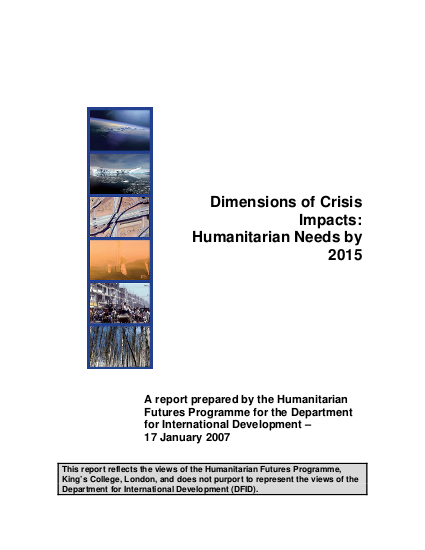
This study offers an overview of key global trends and their implications for humanitarian assistance. It provides a sense of the scale of the numbers of people that could be affected by a specific set of drivers, shocks and humanitarian crisis agents between now and 2015 in four broadly defined regions: South Asia, East Africa, Southern Africa and Central Asia. This study reflects the findings of major international organisations such as the United Nations and the World Bank as well as those of leading private and academic research institutions. It relies heavily upon such reports as the World Bank’s Natural Disaster Hotspots and more recently the Stern Review on the Economics of Global Climate Change.
The study’s conclusions indicate that over the next decade the international community will have to respond to the consequences of interactive drivers, shocks and crisis agents which will be significantly triggered or compounded by global climate change. Using the period 2001 to 2005 as a baseline, these inter-related factors will translate into a 25% increase of crisis affected people in those four regions by 2015.
